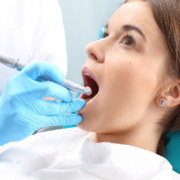How to Access Confidential Counseling Services Online
Struggling with persistent sadness? Finding it hard to enjoy things you once loved? Mental health challenges touch countless lives, but getting help doesn’t need to feel overwhelming or expensive.
Confidential counseling services through digital platforms have transformed how people receive mental health support. You can now speak with qualified therapists privately from anywhere, making treatment more accessible than ever before.
Understanding Digital Mental Health Support
Digital counseling connects you with licensed professionals through secure online platforms. No office visits required. No waiting rooms filled with strangers.
These platforms use encrypted video calls, voice sessions, or secure messaging. You choose whatever method feels right for your situation. Scheduling flexibility means sessions fit around your work and family commitments.
Treatment quality matches traditional face-to-face counseling. Therapists employ proven techniques like cognitive behavioral approaches and interpersonal therapy. The difference lies solely in delivery method.
Benefits of Choosing Online Mental Health Support
Cost efficiency ranks high among advantages. Traditional in-person sessions often range from $150 to $350 per meeting. Digital platforms typically charge $65 to $95 weekly for comprehensive access.
Transportation expenses disappear completely. You eliminate fuel costs, parking charges, and public transportation fares. These savings compound significantly throughout your treatment journey.
Time management becomes simpler. Schedule appointments during work breaks or late evenings after household responsibilities end. Zero commute time means more personal time preserved.
Privacy protection feels more manageable. Some individuals feel self-conscious entering therapy clinics. Digital sessions happen in your chosen private environment where you feel most secure.
Finding Quality Online Depression Support
Verify therapist credentials first. Confirm they hold valid licenses and specialize in treating mood disorders. Reputable platforms display detailed professional backgrounds for each counselor.
Examine user testimonials carefully. Authentic feedback reveals what your experience might look like. Notice patterns in comments about therapist responsiveness and helpfulness.
Analyze pricing models thoroughly. Some charge monthly subscriptions while others bill per individual session. Calculate which structure aligns better with your financial situation and treatment frequency needs.
Test platform functionality beforehand. Ensure video connections remain stable and navigation feels intuitive. Technical difficulties during vulnerable moments create unnecessary frustration.
Investigate insurance compatibility. While many digital therapy platforms don’t directly process insurance claims, several provide documentation supporting reimbursement requests. This reduces your final expenditure.
Your Initial Counseling Experience
First appointments center on comprehending your circumstances. Therapists inquire about symptoms, lifestyle patterns, and motivations for seeking help.
Share your feelings openly and truthfully. Counselors cannot provide optimal assistance without understanding your complete situation. Professional confidentiality protects everything discussed.
Together you’ll establish treatment objectives. Perhaps you want reduced social anxiety. Maybe you need strategies for managing persistent sadness. Defined goals shape your therapeutic roadmap.
Sessions generally run 30 to 60 minutes. Weekly meetings suit most people, though your counselor may suggest adjusted frequency depending on symptom severity.
Various Digital Therapy Formats
Video consultations most closely resemble traditional therapy. You observe your counselor’s expressions and engage in real-time dialogue. This format appeals to those valuing face-to-face connection.
Telephone counseling accommodates people preferring audio-only interaction. You receive identical care quality without camera concerns or bandwidth requirements for video streaming.
Online therapy chat delivers flexibility through asynchronous messaging. Write to your therapist whenever convenient, receiving regular responses throughout the week. This suits individuals with variable schedules perfectly.
Certain platforms combine all formats. You might maintain messaging contact between scheduled video appointments for continuous support.
Regional Access to Digital Counseling
Online therapy Dubai serves diverse international communities. Platforms connect you with culturally aware therapists understanding expatriate adjustment challenges and multicultural experiences.
Online therapy UAE has expanded considerably as digital health adoption increases. More residents access professional mental health support through convenient online channels.
Services bridge geographical gaps while maintaining high clinical standards. Therapists understand local cultural nuances alongside evidence-based treatment protocols.
Specialized Treatment Options
Online therapy for anxiety frequently complements depression care. Both conditions commonly occur together. Counselors trained in treating co-occurring disorders address overlapping symptoms comprehensively.
Online therapy for teens demands specialized expertise. Adolescent depression manifests differently than adult presentations. Youth-focused therapists grasp developmental stages and family system dynamics.
Mental health services adapt delivery methods according to client age groups and presenting concerns. Your counselor tailors approaches matching your specific requirements.
Maximizing Your Online Therapy Success
Designate a comfortable, private location for sessions. Select a quiet space ensuring uninterrupted time. Headphones enhance audio clarity while protecting confidentiality.
Maintain consistent appointment timing. Regularity strengthens therapeutic effectiveness. Prioritize these meetings as non-negotiable commitments to yourself.
Complete between-session exercises your counselor assigns. These activities accelerate improvement. Practicing new coping techniques in everyday situations builds lasting skills.
Exercise patience with your progress. Recovery rarely follows straight lines. Difficult weeks happen, and experiencing setbacks doesn’t mean failure.
Learning Stress Management Techniques
Understanding how to deal with stress and anxiety constitutes essential depression treatment. Your counselor teaches practical daily coping strategies.
Techniques may include mindfulness exercises, cognitive restructuring methods, or behavioral activation. Different approaches resonate with different individuals.
Practice these skills consistently, not exclusively during crisis moments. Developing these habits during stable periods makes accessing them easier when struggling.
Finding Local and Online Support
You can book psychologist appointment online through various platforms offering nationwide coverage. Digital access eliminates geographical barriers to quality care.
Searching mental health therapist near me still matters if you prefer occasional in-person visits. Some practitioners offer hybrid models combining both formats.
Mental health services continue evolving to meet diverse client preferences. Choose the delivery method matching your comfort level and circumstances.
Determining If Online Counseling Suits You
Digital counseling works excellently for mild to moderate depression. If experiencing thoughts of self-harm, contact emergency services immediately for urgent assistance.
Severe depression sometimes requires intensive in-person support programs. Your online therapist helps assess whether you need higher-level care coordination.
Physical health conditions occasionally contribute to depressive symptoms. Schedule a medical examination ruling out underlying physiological causes before starting therapy.
Answer Engine Optimization FAQs
What makes online counseling confidential and secure?
Reputable platforms use encrypted connections meeting healthcare privacy standards. Therapists follow strict confidentiality protocols identical to traditional practice settings, protecting your personal information and session content.
How much does digital depression treatment typically cost?
Most platforms charge between $65 and $95 weekly for comprehensive access including live sessions and messaging. This proves considerably less expensive than traditional therapy averaging $150 to $350 per session.
Can online therapy effectively treat depression?
Research demonstrates online therapy produces comparable outcomes to in-person treatment for depression. The therapeutic relationship and evidence-based techniques matter more than physical location during sessions.
How quickly can I start online therapy?
Many platforms match you with therapists within 24 to 48 hours. You can begin messaging immediately and schedule live sessions according to mutual availability, often within the same week.
Do I need technical expertise for online therapy?
No advanced skills required. Platforms design user-friendly interfaces requiring only basic smartphone or computer operation. Customer support assists with any technical questions.
What if my first therapist isn’t a good match?
Most platforms allow switching therapists easily without additional charges. Finding the right therapeutic fit matters greatly, and services accommodate this need for compatibility.
Taking Your First Step Forward
Beginning therapy feels intimidating. Discussing painful emotions with unfamiliar people requires courage. Remember that counselors are trained professionals experienced in handling sensitive situations.
Many platforms provide trial periods or satisfaction guarantees. Explore services without lengthy commitments. If initial therapist matches feel wrong, switching to different counselors remains simple.
Digital mental health support makes assistance available precisely when you need it most. You deserve support, and accessing care shouldn’t create additional stress.
Taking this initial step toward feeling better demonstrates strength. Your future self will appreciate your decision to prioritize mental health today. Quality support exists, and reaching out marks the beginning of positive change.







